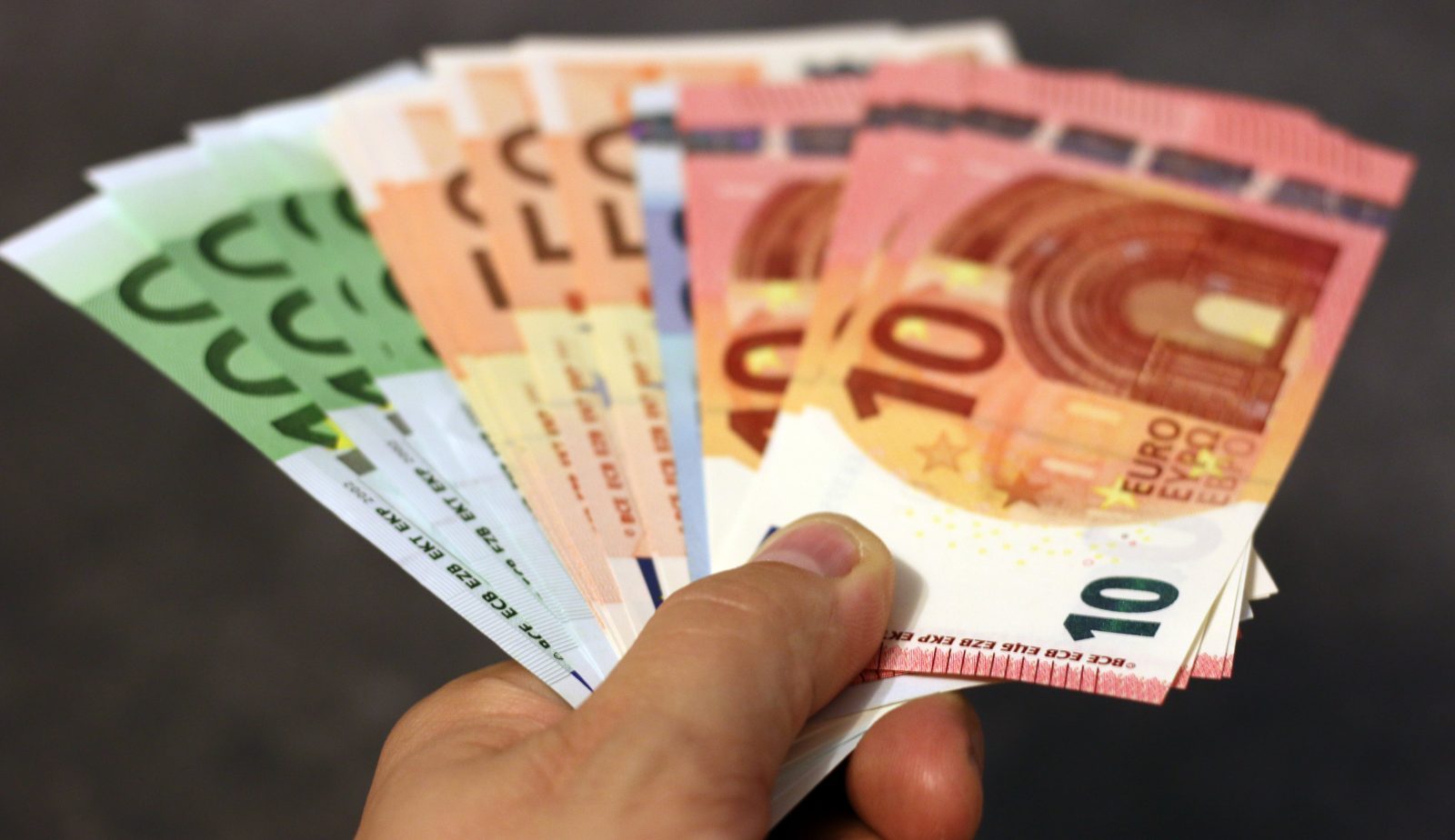
Malta, a small island nation located in the Mediterranean Sea, has its own monetary system and currency. In this article, we will explore the history of currency in Malta, the introduction of the euro, currency exchange options, the use of credit and debit cards, and the impact of the euro on Malta’s economy.
Understanding Malta’s Monetary System
In order to understand the currency used in Malta today, it is important to delve into the history of its monetary system. For many years, Malta had its own currency known as the Maltese lira. This currency played a significant role in the island nation’s economy and daily transactions.
However, in 2008, Malta decided to adopt the euro as its official currency, a move that had important implications for the country’s financial landscape.
History of Currency in Malta
The history of currency in Malta dates back centuries. In the early years, various foreign currencies were used on the island, including the Roman denarius and the Arab dinar. These currencies reflected the influence of different civilizations that had a presence in Malta throughout its history.
It wasn’t until 1972 that the Maltese lira was introduced as the official currency. This marked a significant milestone for Malta, as it gained greater control over its monetary policy and economic stability. The Maltese lira became a symbol of national identity and sovereignty.
Throughout the years, the Maltese lira went through different denominations and designs, showcasing the rich cultural heritage of Malta. The currency featured iconic Maltese landmarks, historical figures, and symbols that represented the nation’s values and aspirations. The Maltese lira played a vital role in facilitating trade, tourism, and everyday transactions among the locals.
Transition to the Euro
In preparation for Malta’s accession to the European Union, the decision was made to adopt the euro as the official currency. This transition was a significant step for Malta, aligning its monetary system with other European Union member states and fostering closer economic integration.
The process of transitioning from the Maltese lira to the euro was carefully managed, ensuring a smooth changeover for businesses and individuals alike. The Maltese Central Bank played a crucial role in this process, raising awareness and providing assistance to those affected by the currency switch.
As part of the transition, a comprehensive public education campaign was launched to familiarize the Maltese population with the new currency. Information sessions, workshops, and educational materials were made available to ensure that people understood the value and usage of the euro.
On January 1, 2008, the euro officially became the currency of Malta. The Maltese lira ceased to be legal tender, and all financial transactions were conducted in euros. The adoption of the euro brought about a range of benefits, including price stability, increased economic opportunities, and easier travel within the Eurozone.
Today, the euro is widely accepted and used in Malta, both by locals and tourists. It has become an integral part of the country’s financial system, supporting economic growth and facilitating international trade.
The Euro in Malta
Since Malta’s adoption of the euro in 2008, the currency has become an integral part of the island nation’s economy. Whether you are a local resident, a tourist visiting Malta, or a business operating within the country, understanding the euro’s functionality is crucial.
The euro’s introduction in Malta brought about significant changes in the way the country conducted its financial transactions. It marked a new era for the country, aligning it with the economies of other European Union member states and simplifying cross-border transactions.
Introduction of the Euro
On January 1, 2008, the euro officially replaced the Maltese lira as the legal tender in Malta. This historic moment was met with great anticipation and excitement as the country embraced the benefits of a unified currency. The adoption of the euro not only symbolized Malta’s integration into the European Union but also signaled its commitment to economic stability and growth.
With the introduction of the euro, prices in Malta underwent a transformation. The familiar Maltese lira signs and symbols were replaced with the euro symbol, and prices were displayed in euros across the country. This change brought a sense of uniformity and ease for both locals and tourists, as they no longer had to navigate through different currencies when making purchases.
Additionally, new banknotes and coins corresponding to euro denominations were introduced into circulation. These banknotes and coins featured iconic Maltese landmarks and historical figures, showcasing the unique cultural heritage of the island nation.
How the Euro Works in Malta
From the perspective of individuals in Malta, using the euro is straightforward. The currency is widely accepted across the island, ensuring a seamless experience when paying for goods and services. Whether you are shopping at local markets, dining at a restaurant, or visiting tourist attractions, you can rely on the euro as a trusted means of payment.
Banking services in Malta have also seamlessly integrated with the euro. Residents and businesses have access to a unified European financial system, allowing for efficient and convenient financial transactions. Whether it’s withdrawing cash from ATMs, depositing funds, or transferring money, the euro facilitates these transactions smoothly.
Furthermore, electronic payments have become increasingly prevalent in Malta. Online shopping, bill payments, and money transfers are conducted in euros, providing a secure and efficient way to manage finances. The euro’s stability and widespread acceptance have contributed to the growth of e-commerce and digital banking in Malta.
As Malta continues to thrive as a popular tourist destination, the euro plays a vital role in facilitating international transactions. Visitors from all over the world can easily exchange their currencies for euros, ensuring a hassle-free experience during their stay. The euro’s acceptance in hotels, restaurants, and tourist attractions further enhances the convenience for travelers.
In conclusion, the adoption of the euro in Malta has brought numerous benefits to the country’s economy and its residents. It has simplified financial transactions, promoted economic integration, and enhanced Malta’s position as a global player. The euro’s continued presence in Malta is a testament to the country’s commitment to progress and its place within the European Union.
Currency Exchange in Malta
While the euro is the official currency in Malta, it is important to understand the options available for currency exchange, especially for tourists visiting the country.
When it comes to currency exchange in Malta, there are several options to choose from. Exchange bureaus and banks are readily available throughout the country, offering currency exchange services to both locals and tourists. It is recommended to compare exchange rates and fees to ensure you receive a favorable rate.
In popular tourist areas, you might also find shops and hotels offering currency exchange services. This can be convenient for those who prefer to exchange money at their place of accommodation or while shopping. However, it is important to exercise caution when exchanging money outside of established financial institutions, as the rates may be less favorable and there is a higher risk of encountering fraudulent practices.
Where to Exchange Currency
When it comes to exchanging currency in Malta, it is advisable to use reputable banks or exchange bureaus. These institutions are regulated and offer a secure environment for currency exchange. Additionally, they often provide competitive rates and transparent fees.
It is important to note that exchanging currency at hotels and airports should be avoided, as these places often charge higher fees and offer less favorable rates. While it may be convenient to exchange money at these locations, it is generally more cost-effective to use banks or exchange bureaus.
Tips for Currency Exchange in Malta
If you need to exchange money in Malta, here are a few tips to keep in mind:
- Check the exchange rates before arriving in Malta to get an idea of what to expect. This will help you determine whether it is better to exchange money in your home country or in Malta.
- Use reputable banks or exchange bureaus to ensure the security of your funds. Look for institutions that are well-established and regulated.
- Avoid exchanging currency at hotels and airports, as these places often charge higher fees. Instead, opt for banks or exchange bureaus for better rates.
- Consider using a pre-paid travel card for convenience and to avoid carrying large amounts of cash. These cards can be loaded with euros and used like a debit card, offering convenience and security.
- Keep an eye on the latest exchange rates to make the most of your money. Exchange rates fluctuate, so it is beneficial to stay informed and exchange currency when the rates are favorable.
By following these tips and being aware of the available options, you can ensure a smooth and cost-effective currency exchange experience in Malta.
Using Credit and Debit Cards in Malta
Aside from cash, credit and debit cards are widely accepted in Malta, making them a convenient payment option for both locals and tourists.
Acceptance of Cards in Malta
Most establishments in Malta, including shops, restaurants, hotels, and tourist attractions, accept major credit and debit cards. This means you can easily make payments without carrying excessive amounts of cash.
It is important to note that while card acceptance is widespread, there may be a minimum spend requirement or additional charges for using cards for small transactions. Be sure to check with the establishment beforehand.
Charges for Using Cards in Malta
When using credit or debit cards in Malta, it is worth considering any possible charges that may apply. Some banks and card issuers may impose foreign transaction fees or currency conversion charges.
It is advisable to inform your bank or card issuer about your travel plans to ensure your cards are not flagged for suspicious activity while using them in Malta. Additionally, consider obtaining a card that offers favorable terms for international use.
Malta’s Economy and the Euro
The adoption of the euro has had a profound impact on Malta’s economy, shaping the country’s trade, investment, and tourism sectors.
Impact of the Euro on Malta’s Economy
The euro has provided stability and facilitated trade for Malta, removing exchange rate risks within the European Union. This has made it easier for businesses to engage in cross-border transactions, attracting foreign investments and promoting economic growth.
Additionally, the euro has simplified travel and tourism within the European Union, making it more convenient for visitors from other member states to explore Malta and contribute to its tourism industry.
Future Predictions for Malta’s Currency
As a member of the European Union, Malta has a vested interest in the future of the euro. The currency has weathered challenges over the years and continues to evolve. The future of Malta’s currency will depend on various factors, including economic developments within the European Union and the country’s own fiscal policies.
For now, the euro remains the currency used in Malta, offering convenience and stability to residents and visitors alike.
In conclusion, Malta’s journey with currency has taken it from the Maltese lira to the adoption of the euro. The transition has brought about changes in everyday transactions, currency exchange options, and the overall economic landscape of the country. Whether you are planning a trip to Malta or simply interested in the currency systems of different nations, understanding what currency is used in Malta is essential for a smooth financial experience on the captivating Mediterranean island.






